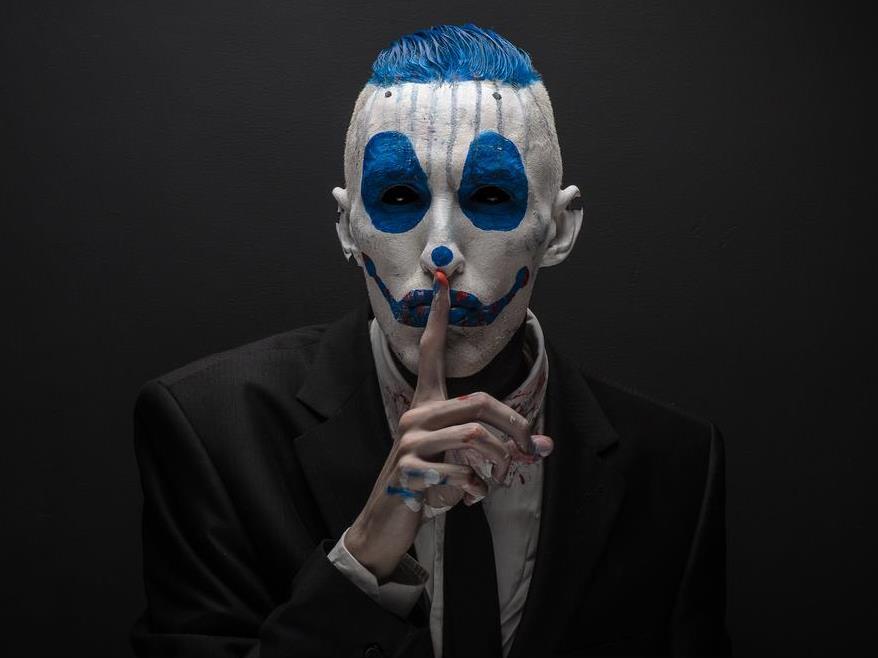An unprecedented wave of “creepy clowns” is, apparently, sweeping the globe. It is thought to have started in August, in South Carolina, where two clown figures were spotted by children lurking near some woods – raising the concerns of local police. Throughout September the phenomenon spread across North America, and in recent weeks hundreds of clown sightings have been reported in Australia, New Zealand, France and the UK.
Journalists and academic pundits have posed numerous theories about the cause of this troubling phenomenon: marketing ploy, sophisticated enhanced reality game, or a return of a cultural obsession with evil clowns that originated in Stephen King’s novel, It.
But for those of us involved in the business of clowning, the craze – as well as the frenzied internet response that appears only to fan the flames by regurgitating stock images of ghoulish clown faces – is yet another sad reminder of a widespread misunderstanding of what clowns actually are and what they do.

I am not one of those who says they cannot understand what is scary about clowns. As a performer I have experienced my fair share of crying children and awkward adults and know that there is something about clowns (even the least garish-looking ones) that arouses discomfort. But this is nothing new; throughout history clowns have played to our deepest fears of disorder, chaos and wrongness – often for crucial social purposes.
Foolish folly
One of the origins of modern day clowning was the Feast of Fools – which was a popular festival in France, during the Middle Ages. Here clownish antics took centre stage in a carnival of excess. Masked hedonism and the perversion of social values were encouraged – but eventually outlawed by the Catholic church. Amateur fool societies called “societies joyeuses” perpetuated the tradition of festive mayhem, often using their mime skills to denounce corrupt officials or other kinds of antisocial behaviour in public displays of humiliation called “charivaris”.

Native American clowns perform a similar role even today. Believed to possess magical shamanistic powers, they are also known for their use of taboo-breaking humour to expose social hypocrisy. According to anthropologist Ralph Beals, Pueblo clowns were permitted to indulge in “obscene behaviour” and play “fear-inspiring characters” specifically to punish known miscreants.
From the powerful to the humble, everyone was fair game. So even if you were not the target of their punitive pranks, you knew that one day you might be. The clowns – released from the constraints of proper behaviour – became objects of reverence and fear.
Clowning around
It is this freedom to personify wrongness and disorder, typified by the grotesque face of the circus clown, that gives clown impersonators the potential to be “scary”. But this power also gives true clowns the potential to touch on the truths of human existence and show us who we really are.
Charlie Chaplin’s anarchic dance amid the powerful factory machinery in his film Modern Times illustrates that this quality of clowning also exists in Western culture. And if you think that clowning died out with silent film comedy, watch an episode of BBC’s Miranda to see a plethora of classical clown gags and routines being skilfully reimagined for the television format. From Morecambe and Wise to Rowan Atkinson to Sacha Baron Cohen, we see clowns, reinvented for the modern era, winking as they ridicule and satirise our everyday existence.
But perhaps clowns’ powerful influence on society is most clearly seen in the field of social clowning. Hospital clowning, or clown care, has been an expanding global phenomenon since the 1980s. And it is increasingly recognised within the medical profession as having genuine clinical benefits. Likewise, groups such as Clowns Without Borders bring the spirit of laughter and play to areas of the world affected by conflict and disaster, including recent visits to refugee camps in Greece and Calais.
My own research looks at social clowning in Colombia, where clowns have for years been involved in peace and reconciliation efforts. The UN has recently hired a clown artist, Camilo Rodriguez, as a special adviser, and has funded a clown show that aims to engage young people in the peace process – a powerful acknowledgment of the seriousness with which clown work is treated in Colombia.
Professionals not pranksters
Perhaps, then, this craze for scaring people using clown masks is just an echo of the real function of certain clowns as justly feared purveyors of social justice. But even if those responsible are conscious of this, they have missed one vital thing about clowning.
Real clowning works by provoking delight and pleasure while exposing unacknowledged truths about human nature. And hiding behind masks and scaring people with machetes reveals nothing except the cowardice of the perpetrators. These type of acts have nothing to do with clowning.
Real clowns bring the light of laughter to our darkest corners and dance a jig where others fear to tread. And most worryingly for those in the business, this latest wave of crazed clowns devalues a cultural practice which is all about laughing at our own flawed nature. And in today’s world, that is something we need more than ever.
Barnaby King, Senior Lecturer in performance, Edge Hill University
This article was originally published on The Conversation. Read the original article.





